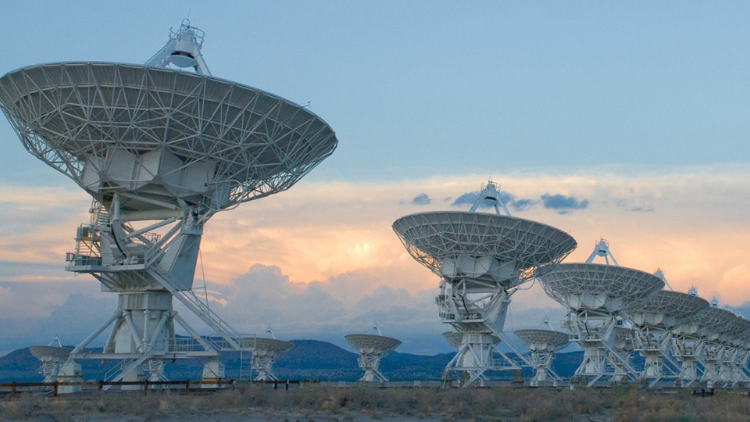Tucked deep in the high desert plains of central New Mexico, the Very Large Array (VLA) looks like something straight out of a science fiction film—because it kind of is. These massive white satellite dishes spread across the horizon in eerie, geometric silence, staring into the void.
It’s not a set. It’s real. And it’s one of the most powerful radio observatories on Earth.
Where It Is
Location: Plains of San Agustin, 50 miles west of Socorro, New Mexico
Address: NM-52, Magdalena, NM 87825
Coordinates: 34.0784° N, 107.6184° W
Hours: Open daily 8:30 AM to sunset (visitor center open 9 AM–4 PM)
Entrance Fee: Free to explore from the road; small fee for visitor center access
The VLA sits on the desolate flatlands near the ghost town of Magdalena. There’s nothing nearby but cows, mountains, and sky. You can literally drive right up to it via U.S. Route 60—no gates, no hassle.
What Is It?
The Very Large Array is a collection of 27 massive radio telescopes, each 82 feet in diameter. Arranged in a Y-shaped configuration that spans up to 22 miles when fully extended, the dishes work together to act as a single giant antenna.
Operated by the National Radio Astronomy Observatory, the VLA picks up faint radio signals from galaxies, quasars, black holes, and who-knows-what else.
What You’ll See
- Miles of satellite dishes in perfect symmetry across the desert floor
- A self-guided walking tour with close-up views of one of the giant antennas
- Occasional dish movements, which are unsettlingly silent and oddly graceful
- Interpretive displays and science exhibits (inside the visitor center)
- Wide, wide open skies—great for astrophotography and time-lapses
You’ll feel like you stepped into Contact, Arrival, or some Cold War-era X-Files episode. (In fact, Contact was partially filmed here.)
Why It Feels So Weird
The VLA is dead quiet. No voices. No motion, unless the dishes shift. And you’re standing in a place built to listen to the universe itself.
There’s also a low-key cosmic horror vibe to it all—giant machines quietly absorbing data from the stars, collecting signals older than humanity.
It’s not spooky, but it is uncanny. Awe mixed with unease.
Tips for Visiting
- No drones allowed—this is a protected science site.
- Bring water, snacks, and gas. The nearest services are 45–60 minutes away.
- Dress for wind and sun. The desert elevation is high and exposed.
- If you want solitude, go early or late in the day.
- The antennas are sometimes repositioned—call ahead if you want to see them in the wide or compact layout.
Final Thoughts
The Very Large Array isn’t flashy. It’s quiet, weird, and deeply humbling. If you like strange, remote places that make you feel small (in the best way), this is one of the most unique road trip stops in the Southwest.



